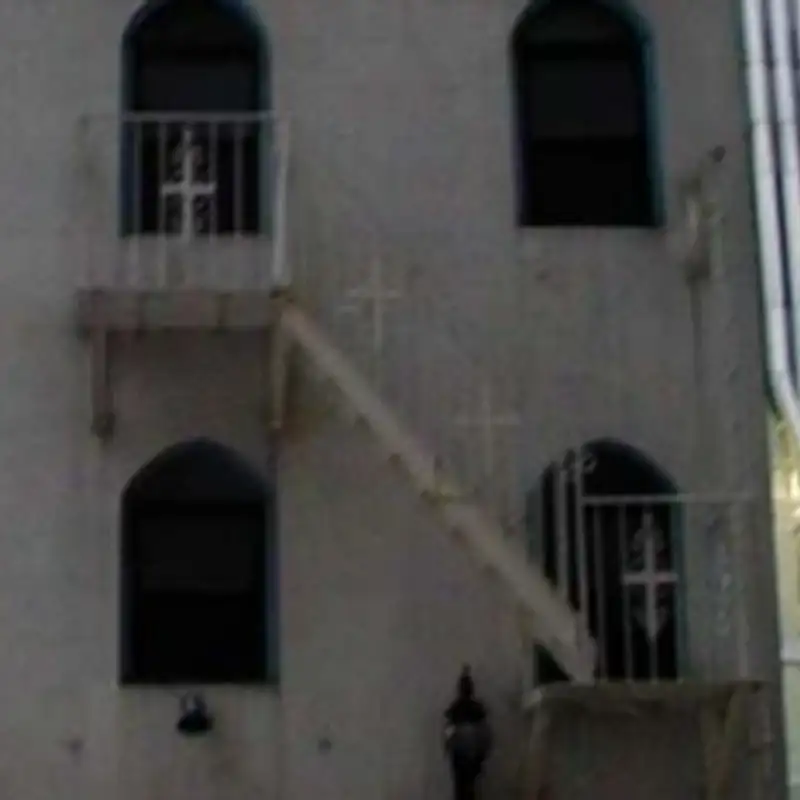
How Could Architecture be Christian?
Years ago, when I worked in the city, I took perverse pleasure in the prophetic absurdity of a small, dilapidated, prewar brownstone jutting out against the pristine, monied plaza of the Towers, built as money does, to cover the ugliness of human sin with the vanity of majesty and looks.
It was an ugly, filthy box, with fire escapes and all. I used to look to see if I could find an old Greek woman running a clothesline to hang dirty underwear out to dry for all the wealthy brokers to see—people who made their living funding all the genocides the Western media has long since perfected hiding from us—but I could never find that underwear.
Alas, the brownstone is gone, but the underwear is finally on display.
That church was not built by Greek sailors. It was camped in. It was an old brownstone that people prayed in. It was a tent of meeting and it was a threat to the city elite—to people who worship money.
It was ugly on the outside and beautiful on the inside.
“I remember in Romania we had a class on Christian architecture.”
“ How,” Fr. Paul asks, “could architecture be Christian?”
How, indeed?
“I mean, the dome is Roman, Greco-Roman, it’s not Christian.”
“The Orthodox like to speak about the dome, heaven descending upon earth. In the West, in Europe, they like much more the spires, you know, going up to God.”
“Ultimately, you start theologizing the stone.”
You know, stones. Rubble. The stuff left over after clergy bless bombs with holy water or politicians scribble little hearts with love notes like “finish them.”
That’s what happens when you start theologizing stones.
I prefer praying in prewar brownstones or whatever is available—free of charge, with a charge.
He who has ears to hear, let him hear.
(Episode 325)
★ Support this podcast on Patreon ★
It was an ugly, filthy box, with fire escapes and all. I used to look to see if I could find an old Greek woman running a clothesline to hang dirty underwear out to dry for all the wealthy brokers to see—people who made their living funding all the genocides the Western media has long since perfected hiding from us—but I could never find that underwear.
Alas, the brownstone is gone, but the underwear is finally on display.
That church was not built by Greek sailors. It was camped in. It was an old brownstone that people prayed in. It was a tent of meeting and it was a threat to the city elite—to people who worship money.
It was ugly on the outside and beautiful on the inside.
“I remember in Romania we had a class on Christian architecture.”
“ How,” Fr. Paul asks, “could architecture be Christian?”
How, indeed?
“I mean, the dome is Roman, Greco-Roman, it’s not Christian.”
“The Orthodox like to speak about the dome, heaven descending upon earth. In the West, in Europe, they like much more the spires, you know, going up to God.”
“Ultimately, you start theologizing the stone.”
You know, stones. Rubble. The stuff left over after clergy bless bombs with holy water or politicians scribble little hearts with love notes like “finish them.”
That’s what happens when you start theologizing stones.
I prefer praying in prewar brownstones or whatever is available—free of charge, with a charge.
He who has ears to hear, let him hear.
(Episode 325)
